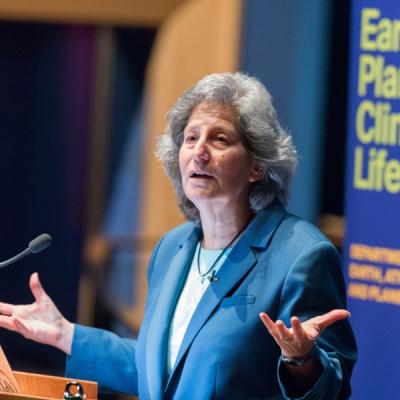Climate change instruction is being integrated in universities around the world as colleges prepare students for a labor market affected by a warming world.
By 2nd-year student Aliza Diop
Universities worldwide have begun to prepare their students for careers that will ultimately need them to consider their role in the climate crisis, regardless of industry. All types of colleges and universities, like law schools, med schools, economic departments, and more, are starting to incorporate climate into their curricula, specifically how the climate crisis will transform every field, and are attempting to get students ready to face any transformations from climate change in the labor market.
So far, these incorporations are having an impact. One study found that the infusion of climate change as an umbrella theme in lecture-style courses had significant learning gains for the students who took the course. They found that even if climate change is not the focus of the course, weaving climate science content into the class can positively impact students’ knowledge of climate change and increase risk perceptions. An increase of climate change education terms, such as adaptation, perceptions, policy, and more, have been used more frequently in reviewed literature, leading researchers to believe that students are studying climate change more, and it’s receiving more attention on college campuses.
Climate Change and Education
It’s clear that climate change instruction is beginning to reach college campuses, but what exactly does that look like, and how does it incorporate into one’s future career? Education and teaching are prime examples of how climate change instruction can properly prepare college students and have an even more significant impact on a population.
Education will be crucial in addressing the climate crisis, especially in primary and secondary schools. Education empowers and motivates young people to engage; knowing the facts, ways to adapt, and solutions can spur them into action. Although, many teachers in K-12 schools need more tools and resources to deliver effective instruction on climate change to their students. Much of this lack of tools stems from inadequate teacher education programs and professional development services not preparing educators for climate change instruction. Most middle and high school teachers devote only an hour or two to teaching about the climate crisis, and 70% and 55% of those teachers, respectively, don’t recognize the scientific consensus on climate change.
Students in education departments can learn many aspects of climate change instruction, such as hands-on activities, acquiring valid, relevant knowledge about climate change, and teaching it in a way that doesn’t cause anxiety for students. Future teachers need to learn how to engage a classroom where students are thinking about ways to change or develop systems to respond to the climate crisis. This creates a cascade effect: future teachers learn about climate change and how to teach climate change to students who will go on to use that knowledge to respond to climate change. It produces a whole generation ready to tackle the climate crisis solely by acquiring knowledge.
Climate Change Instruction at UVA
The University’s administration has already identified climate Change instruction and education as one of the University’s sustainability goals for 2030. UVA wants to commit to creating learning experiences that transcend disciplines to build an intellectual community, educate future sustainability leaders, provide training in climate education for K-12 teachers, and more. The University must continue to build on these goals to equip its students with the skills and the tools necessary to enter a labor force and society that asks them to combat the climate crisis.
Looking Forward
While the increase in climate change instruction is encouraging, there still needs to be a push in universities to continue this upward trend. The climate crisis is daunting and destructive and has hit a large proportion of the world. Around 85% of the world’s population has already been affected by climate change, from storms, wildfires, and dangerous weather conditions threatening health. Furthermore, the climate crisis disproportionately affects marginalized groups. For example, the effects of climate change, like extreme heat, air pollution, and devastating floods, result in higher deaths for African American and low-income communities.
There are a lot of components and collaboration required for the world to adequately respond to the climate crisis in a way that’s effective and just, and educating the future changers and leaders of the world is one of those critical components. Therefore, universities and colleges need to continue incorporating climate change instruction into their curriculum and degree programs to prepare their students for a future affected by the climate crisis and create citizens ready to respond to and solve it.
My name is Aliza Diop, I’m from Oakland, California, and I’m a second-year at the University of Virginia potentially majoring in Youth & Social Innovation and minoring in Public Policy & Leadership and French. I’m a student intern in the Office of Sustainability, working on the Green Living Team.




